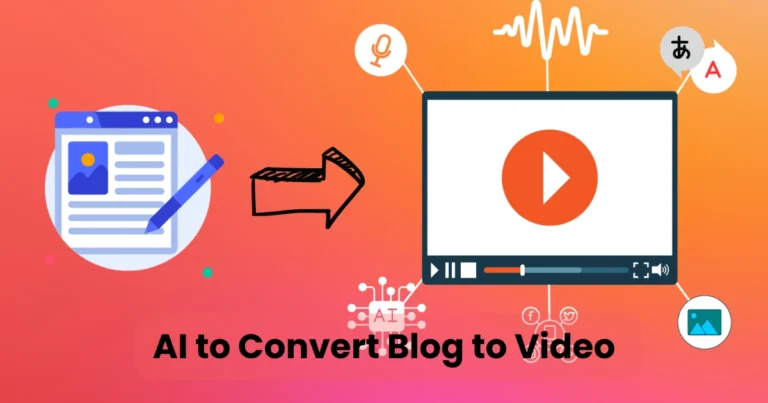Mirror Feedback Loop for Content Growth: A Guid

Contents
- 1 What Is the Mirror Feedback Loop?
- 2 Why Use the Mirror Feedback Loop for Content Growth?
- 3 Step-by-Step Guide to Implementing the Mirror Feedback Loop
- 4 Best Practices for Maximizing the Mirror Feedback Loop
- 5 Common Challenges and How to Overcome Them
- 6 Real-World Examples of the Mirror Feedback Loop in Action
- 7 Tools to Support the Mirror Feedback Loop
- 8 Measuring Success: Key Performance Indicators (KPIs)
- 9 Advanced Tips for Scaling Content Growth
The mirror feedback loop for content growth is a powerful strategy that can transform how you create, refine, and amplify your content to achieve maximum impact. By leveraging audience insights and iterative improvements, this approach ensures your content resonates deeply while boosting engagement and search engine rankings. In today’s fast-paced digital landscape, where attention spans are short, understanding how to harness this loop can set your blog apart. This article will guide you through the process, offering actionable steps, practical examples, and expert tips to help you maximize your content’s potential. Whether you’re a seasoned blogger or just starting, you’ll discover how to use this method to drive sustainable growth.
What Is the Mirror Feedback Loop?
The mirror feedback loop is a cyclical process that involves creating content, gathering audience feedback, analyzing performance, and refining your approach based on insights. Think of it as a mirror reflecting your audience’s preferences back to you, allowing you to adjust your content to better meet their needs. This method emphasizes continuous improvement, ensuring your content evolves with your audience’s expectations.
Key Components of the Mirror Feedback Loop
- Content Creation: Develop high-quality, relevant content tailored to your target audience.
- Feedback Collection: Gather insights from audience interactions, such as comments, shares, and analytics.
- Performance Analysis: Evaluate metrics like engagement, traffic, and conversions to identify strengths and weaknesses.
- Content Optimization: Use insights to refine existing content and inform future strategies.
- Repetition: Repeat the cycle to ensure ongoing growth and relevance.
By consistently applying these steps, you create a dynamic system that aligns your content with audience demands, ultimately driving growth.
Why Use the Mirror Feedback Loop for Content Growth?
Using the mirror feedback loop for content growth offers several benefits that can elevate your blog’s success. Here’s why it’s a game-changer:
- Enhanced Audience Engagement: By reflecting audience preferences, you create content that resonates, increasing shares, comments, and time spent on your site.
- Improved SEO Performance: Optimized content based on feedback aligns with search engine algorithms, boosting rankings for relevant keywords.
- Data-Driven Decisions: The loop relies on analytics, ensuring your strategy is grounded in real insights rather than guesswork.
- Sustainable Growth: Continuous refinement keeps your content fresh and relevant, fostering long-term audience loyalty.
For example, a blog post that initially underperforms can be revised based on feedback, leading to higher engagement and better rankings over time. This iterative approach ensures your content remains competitive.
Step-by-Step Guide to Implementing the Mirror Feedback Loop
To effectively use the mirror feedback loop for content growth, follow these actionable steps. Each phase builds on the previous one, creating a seamless cycle of improvement.

Step 1: Create High-Quality, Audience-Focused Content
Start by crafting content that aligns with your audience’s interests and needs. Conduct keyword research to identify topics with high search volume and low competition. Use tools like Google Keyword Planner or Ahrefs to find relevant terms, including the mirror feedback loop for content growth, to ensure your content is discoverable.
- Tips for Content Creation:
- Write engaging headlines that capture attention (e.g., “Unlock Content Growth with the Mirror Feedback Loop”).
- Use clear, concise language in the active voice to maintain reader interest.
- Incorporate visuals like images, infographics, or videos to enhance readability.
- Ensure your content answers specific audience pain points or questions.
For instance, if your audience struggles with low engagement, create a post addressing this issue, embedding the mirror feedback loop for content growth as a solution.
Step 2: Collect Audience Feedback
Once your content is live, gather feedback to understand how it’s performing. Feedback comes in various forms, including direct audience input and indirect metrics.
- Methods to Collect Feedback:
- Comments and Social Shares: Monitor blog comments and social media interactions to gauge sentiment.
- Surveys and Polls: Use tools like Google Forms or Typeform to ask readers what they liked or want improved.
- Analytics Tools: Platforms like Google Analytics, Hotjar, or SEMrush provide insights into user behavior, such as bounce rates and time on page.
- Email Feedback: Encourage subscribers to share their thoughts via email campaigns.
For example, if readers comment that your post lacks practical examples, note this for the optimization phase. This direct feedback is a cornerstone of the mirror feedback loop for content growth.
Step 3: Analyze Performance Metrics
Next, dive into the data to assess your content’s performance. Focus on metrics that align with your goals, such as traffic, engagement, or conversions.
- Key Metrics to Track:
- Page Views and Unique Visitors: Measure how many people are finding your content.
- Bounce Rate: A high bounce rate may indicate content isn’t meeting expectations.
- Average Time on Page: Longer times suggest engaging, valuable content.
- Social Shares and Backlinks: These indicate content resonance and authority.
- Conversion Rates: Track actions like newsletter sign-ups or product purchases.
Use tools like Google Search Console to see which keywords, including the mirror feedback loop for content growth, drive traffic. Identify patterns, such as which sections of your content keep readers engaged longest.
Step 4: Optimize Based on Insights
With feedback and data in hand, refine your content to address weaknesses and amplify strengths. Optimization can involve updating existing posts or adjusting your future content strategy.
- Optimization Strategies:
- Update Content: Revise underperforming posts by adding examples, improving readability, or incorporating trending keywords.
- Enhance SEO: Adjust meta titles, descriptions, and headings to include high-performing keywords like the mirror feedback loop for content growth.
- Improve User Experience: Add internal links, optimize images for faster loading, or simplify navigation.
- Repurpose Content: Turn a popular blog post into a video, infographic, or social media series to reach new audiences.
For instance, if analytics show readers drop off midway through a post, shorten lengthy sections or add engaging visuals to retain attention.
Step 5: Repeat the Cycle
The mirror feedback loop for content growth thrives on repetition. After optimizing, publish the updated content or create new pieces based on your insights. Then, restart the cycle by collecting fresh feedback and analyzing performance. This iterative process ensures your content stays relevant and effective.
Best Practices for Maximizing the Mirror Feedback Loop
To get the most out of the mirror feedback loop for content growth, follow these best practices:

- Stay Consistent: Publish content regularly to maintain audience engagement and gather consistent feedback.
- Leverage Automation: Use tools like Buffer for social media monitoring or Zapier to streamline feedback collection.
- Engage with Your Audience: Respond to comments and emails to build trust and encourage more feedback.
- Test Variations: Experiment with different headlines, formats, or CTAs to see what resonates most.
- Monitor Trends: Stay updated on industry trends to align your content with current audience interests.
For example, a blogger using the mirror feedback loop for content growth might notice that listicles perform better than long-form essays. They could then prioritize list-based formats in future posts.
Common Challenges and How to Overcome Them
While the mirror feedback loop for content growth is highly effective, you may encounter challenges. Here’s how to address them:

- Challenge: Limited Feedback
Solution: Actively encourage feedback through CTAs, social media prompts, or incentives like free resources. - Challenge: Overwhelming Data
Solution: Focus on key metrics relevant to your goals and use dashboards to simplify analysis. - Challenge: Time Constraints
Solution: Prioritize high-impact content for optimization and automate repetitive tasks like social sharing. - Challenge: Inconsistent Results
Solution: Test small changes incrementally and track their impact over time to identify what works.
By proactively addressing these challenges, you can maintain a smooth and effective feedback loop.
Real-World Examples of the Mirror Feedback Loop in Action
To illustrate the power of the mirror feedback loop for content growth, let’s explore two case studies:

Case Study 1: Lifestyle Blog
A lifestyle blogger noticed their posts on sustainable living received high engagement but low conversions. Using the mirror feedback loop, they:
- Collected Feedback: Readers commented they wanted actionable tips.
- Analyzed Metrics: Google Analytics showed high bounce rates on posts lacking clear CTAs.
- Optimized Content: Added step-by-step guides and prominent CTAs for a newsletter sign-up.
- Results: Newsletter sign-ups increased by 40%, and the blog’s ranking for “sustainable living tips” improved.
Case Study 2: Tech Blog
A tech blog struggled with low traffic despite quality content. By applying the mirror feedback loop for content growth, they:
- Collected Feedback: Social media polls revealed readers wanted more beginner-friendly content.
- Analyzed Metrics: Search Console showed low rankings for beginner-level keywords.
- Optimized Content: Rewrote posts to target keywords like “tech for beginners” and simplified jargon.
- Results: Organic traffic grew by 25% within three months.
These examples show how the mirror feedback loop for content growth can drive measurable results when applied thoughtfully.
Tools to Support the Mirror Feedback Loop
To streamline the mirror feedback loop for content growth, leverage these tools:

- Keyword Research: Ahrefs, SEMrush, or Google Keyword Planner for identifying high-value keywords.
- Analytics: Google Analytics, Hotjar, or Matomo for tracking performance metrics.
- Feedback Collection: Typeform, SurveyMonkey, or social media platforms for gathering audience input.
- Content Management: WordPress or HubSpot for publishing and updating content.
- SEO Optimization: Yoast SEO or Rank Math for improving on-page SEO.
These tools simplify the process, allowing you to focus on creating and refining content.
Measuring Success: Key Performance Indicators (KPIs)
To gauge the effectiveness of the mirror feedback loop for content growth, track these KPIs:
- Organic Traffic Growth: Monitor increases in search engine traffic over time.
- Engagement Metrics: Track comments, shares, and time on page to assess audience interest.
- Keyword Rankings: Use tools like SEMrush to check rankings for the mirror feedback loop for content growth and related terms.
- Conversion Rates: Measure actions like sign-ups, downloads, or purchases driven by your content.
- Return on Investment (ROI): Calculate the value of traffic and conversions relative to the time and resources invested.
Regularly reviewing these KPIs ensures your strategy remains aligned with your goals.
Advanced Tips for Scaling Content Growth
Once you’ve mastered the basics of the mirror feedback loop for content growth, consider these advanced strategies:

- Predictive Analytics: Use AI tools like MarketMuse to anticipate audience needs and trending topics.
- Segmented Feedback: Analyze feedback by audience segments (e.g., age, location) to create hyper-targeted content.
- Collaborative Content: Partner with influencers or guest bloggers to expand your reach and gather diverse feedback.
- Evergreen Content: Focus on timeless topics that remain relevant, reducing the need for frequent updates.
These tactics can amplify your results, making the mirror feedback loop for content growth even more effective.
Conclusion
The mirror feedback loop for content growth is a proven strategy for creating content that resonates with your audience and drives sustainable growth. By creating high-quality content, collecting feedback, analyzing performance, and optimizing based on insights, you can build a blog that thrives in a competitive digital landscape. Start implementing the loop today, and use the tools, tips, and examples provided to refine your approach. With consistency and a data-driven mindset, you’ll unlock the full potential of your content strategy, ensuring long-term success.






